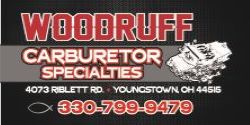jenkins71
Well-Known Member
Hi Guys, just got m block and pistons back from the machine shop.
I gave them the pistons that were in there, L2266's (flat-tops), and the ones I wanted to use, used L2295's (hi-compression domed).
That measured piston-to-wall clearance and found the flat-tops to have .003" clearance, and the L2295's to have .007" clearance.
Is the .007" too high? My book says .008" is the limit. What would you do?
Also, what is a good compression ratio for a 440 street/strip torque monster?
Thanks!
I gave them the pistons that were in there, L2266's (flat-tops), and the ones I wanted to use, used L2295's (hi-compression domed).
That measured piston-to-wall clearance and found the flat-tops to have .003" clearance, and the L2295's to have .007" clearance.
Is the .007" too high? My book says .008" is the limit. What would you do?
Also, what is a good compression ratio for a 440 street/strip torque monster?
Thanks!















